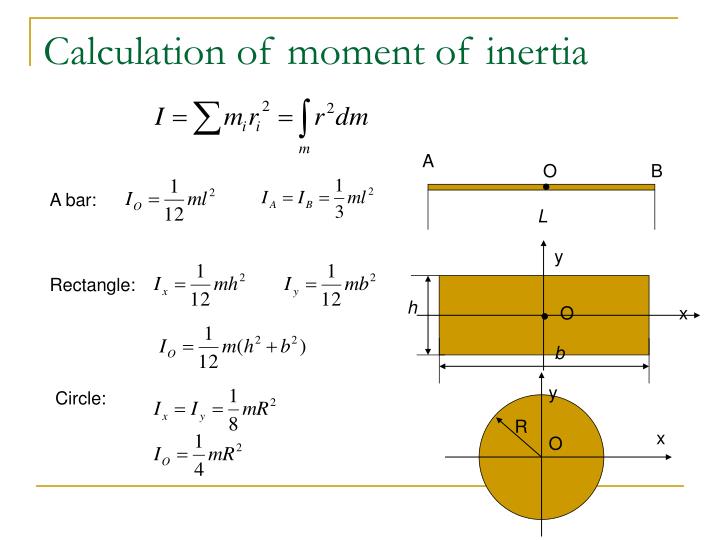

The content will be primarily delivered using light board. Non engineering disciplines may also find the course very useful, from archaeologist who are concerned about the stability of their excavation sites to dentists interested in understanding the forces transmitted through dental bridges, to orthopedic surgeons concerned about the forces transmitted through the spine, or a hip or knee joint. This course is suitable for learners with interest in different Engineering disciplines such as civil engineering, architecture, mechanical engineering, aerospace.
HOW TO CALCULATE MOMENT OF INERTIA OF A CIRCLE HOW TO
You will also learn how to calculate the reaction forces as well as the internal forces experienced throughout the structure so that later you can properly design and size the foundation and the members of the structure to assure the structure’s safety and serviceability. In the next section, we explore the integral form of this equation, which can be used to calculate the moment of inertia of some regular-shaped rigid bodies. the conditions under which it remains stationary or moves with a constant velocity-. We note that the moment of inertia of a single point particle about a fixed axis is simply m r 2 m r 2, with r being the distance from the point particle to the axis of rotation. Calculate the angular acceleration produced (a) when no one is on the. In this course, you will learn the conditions under which an object or a structure subjected to time-invariant (static) forces is in equilibrium - i.e. Change the circles moment of inertia and then try rotating the circle by using. Ignoring constant of integration because of it being definite integral.Statics is the most fundamental course in Mechanics. Insert the value of #dm# calculated in (1) in moment of inertia equation (5) to express it in terms of #z# then integrate over the length of the cylinder from the value of #z=-L/2# to #z=+L/2# Where #d# is distance of parallel axis from Center of mass. #I_"Parallel axis"=I_"Center of Mass"+"Mass"times"d^2# The moment of inertia about any axis parallel to that axis through the center of mass is given by Now we make use of the parallel axis theorem about the #x# axis which states: Let the infinitesimal disk be located at a distance #z# from the origin which coincides with the center of mass.

The moment of inertia about an axis which is perpendicular to the plane contained by the remaining two axes is the sum of the moments of inertia about these two perpendicular axes, through the same point in the plane of the object.Īlso from symmetry we see that moment of inertia about #x# axis must be same as moment of inertia about #y# axis.Ĭombining the equations (3) and (4) we obtain Knowing that the desired axis of rotation is transverse, therefore we need to apply perpendicular axis theorem which states: In the problem we are required to find moment of inertia about transverse (perpendicular) axis passing through its center. Observe from figure 2, that this moment of inertia has been calculated about #z# axis.

We know that moment of inertia of a circular disk of mass #m# and of radius #R# about its central axis is is same as for a cylinder of mass #M# and radius #R# and is given by the equation Since #V="Areal of circular face"xx"length"=pi R^2L#, we obtain If #dm# is the mass of one such disk, then Let us consider that the cylinder is made up of infinitesimally thin disks each of thickness #dz#. We know that its density #rho="Mass"/"Volume"=M/V#.

Let us consider a cylinder of length #L#, Mass #M#, and Radius #R# placed so that #z# axis is along its central axis as in the figure.


 0 kommentar(er)
0 kommentar(er)
